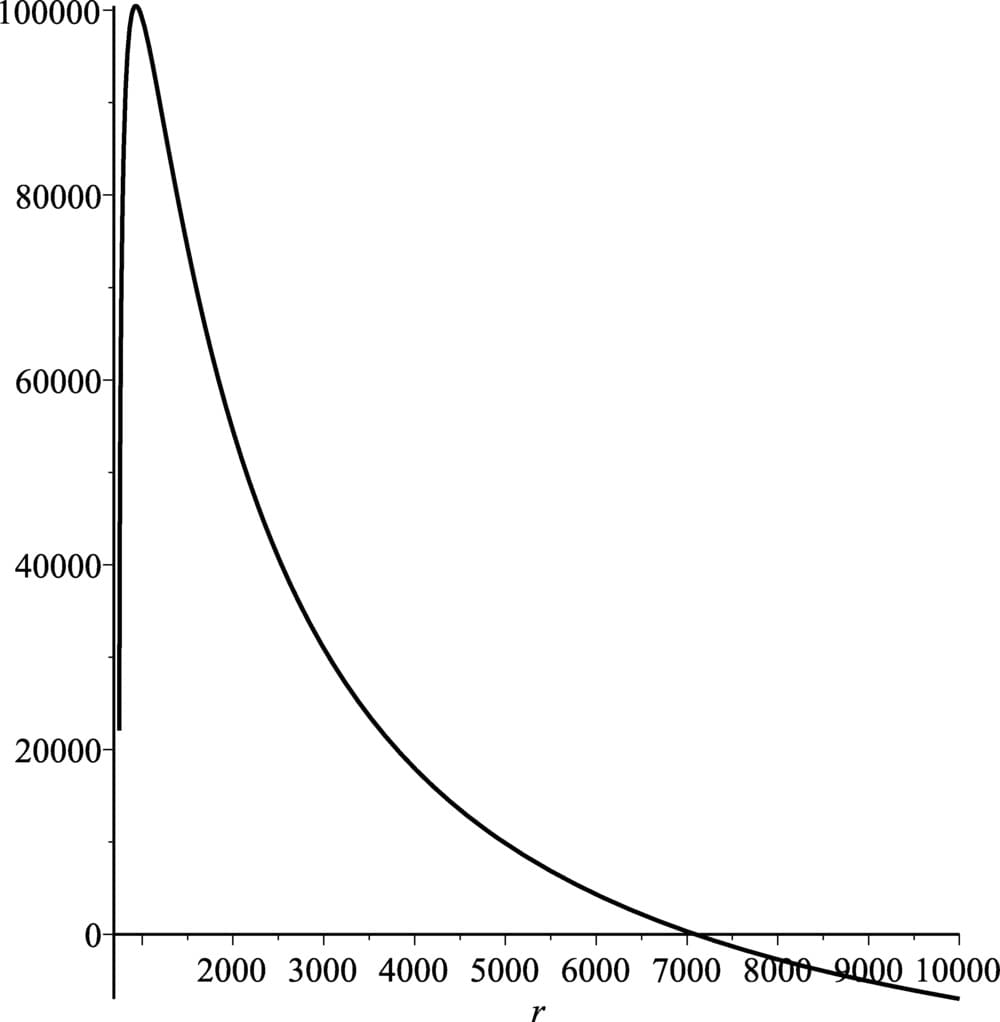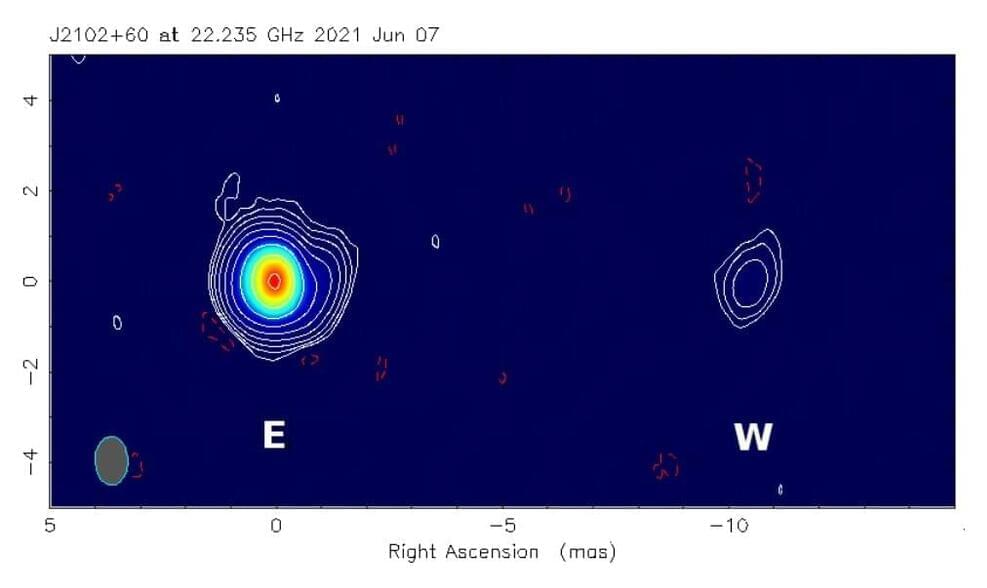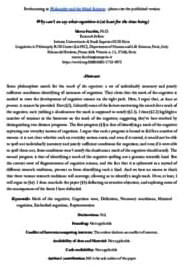Circa 2013 face_with_colon_three
A ten-dimensional theory of gravity makes the same predictions as standard quantum physics in fewer dimensions.


Year 2017 face_with_colon_three
A basic question [1] in the study of the gauge-gravity duality is this: which field theories have a gravity dual? In the case of applications to actual strongly coupled systems such as the Quark–Gluon Plasma [2], [3], [4], [5], [6], this question becomes: does every realistic strongly coupled system have such a dual? To settle this, one needs to examine the most extreme cases. The most extreme strongly-coupled systems currently accessible to experiment are probably (see below) the plasmas produced by collisions of heavy ions at the LHC [7], [8] ; so one needs to consider whether holography works in this case.
In [9] we adduced evidence suggesting that it does not. The problem is a very fundamental one: it appears that the purported gravity dual in some cases does not exist when one attempts to interpret it (as one ultimately must [10]) as a string-theoretic system.
The situation may be briefly explained as follows. Ferrari and co-workers have shown [11], [12], [13], [14] that, simply for reasons of internal mathematical consistency, a string-theoretic bulk spacetime with a holographic dual must satisfy certain fundamental relations between the Euclidean spacetime action and the action of probes (such as branes). This has been explicitly confirmed in a large number of concrete cases [14].

Year 2022, this basically could shield the earth or Mars from solar radiation if we needed it. 😗
First experimental measurement of pure electron outflows associated with magnetic reconnection driven by electron dynamics in laser-produced plasmas.
Magnetic reconnections in laser-produced plasmas have been investigated in order to better understand the microscopic electron dynamics, which are relevant to space and astrophysical phenomena. Osaka University scientists, in collaboration with researchers at the National Institute for Fusion Science and other universities, have reported the direct measurements of pure electron outflows relevant to magnetic reconnection using a high-power laser, Gekko XII, at the Institute of Laser Engineering, Osaka University in Japan. Their findings will be published today (June 30, 2022) in Springer Nature, Scientific Reports.
Established in 2011, <em>Scientific Report</em>s is a peer-reviewed open-access scientific mega journal published by Nature Portfolio, covering all areas of the natural sciences. In September 2016, it became the largest journal in the world by number of articles, overtaking <em>PLOS ON</em>E.


Using the European VLBI Network (EVN), an international team of astronomers has performed high-resolution imaging observations of a powerful and radio-loud high-redshift quasar known as J2102+6015. Results of the observational campaign, presented January 18 on the preprint server arXiv, could help us better understand the nature of this peculiar quasar and other powerful radio sources.
Quasars, or quasi-stellar objects (QSOs), are extremely luminous active galactic nuclei (AGN) containing supermassive central black holes with accretion disks. Their redshifts are measured from the strong spectral lines that dominate their visible and ultraviolet spectra.
Astronomers are especially interested in finding new high-redshift quasars (at redshift higher than 4.5) as they are the most luminous and most distant compact objects in the observable universe. Spectra of such QSOs can be used to estimate the mass of supermassive black holes that constrain the evolution and formation models of quasars. Therefore, high-redshift quasars could serve as a powerful tool to probe the early universe.

Some philosophers search for the mark of the cognitive: a set of individually necessary and jointly suΜcient conditions identifying all and only the instances of cognition. They claim the mark is necessary to answer diΜcult questions concerning the nature and distribution of cognition.
Here, I will argue that, as things stand, given the current landscape of cognitive science, we are not able to identify a mark of the cognitive. I proceed as follows. First, I clarify some factors motivating the search for the mark of the cognitive, thereby highlighting the desiderata the mark is supposed to satisfy. Then, I highlight a tension in the literature over the mark. Given the literature, it is not clear whether the search aims for a mark capturing the intuitive notion of cognition or a genuine scientiΞc kind.
Dr. Aaron Adair Dr. Aaron Adair’s Links:
His book — https://www.amazon.com/gp/product/B00FH46NC8/ref=dbs_a_def_r…atfound-20
His website — https://draaronadair.com/
His Twitter — https://twitter.com/adair_aaron?lang=en.
YouTube — @AaronAdair =====================================================================
**RECOMMENDED ONLINE COURSES HERE**Sign up here for Dr. M. David Litwa’s course — The Ancient Greek Mysteries & Christianity — - https://mythvisionpodcast.com/mysterycultsSign up here for Dr. Dale C. Allison Jr’s course — The Quest For The Historical Jesus — - www.mythvisionpodcast.com/jesus-questSign up for Dr. Bart D. Ehrman’s course — Other Virgin Births In Antiquity — - https://www.mythvisionpodcast.com/virginsSign up for the 7 hour resurrection debate between Dr’s Bart Ehrman & Mike Licona here — - https://www.mythvisionpodcast.com/resurrectionSign up for Dr. Bart D. Ehrman’s Genesis “In The Beginning” Webinar here — - https://www.mythvisionpodcast.com/genesisSign up for Dr. Bart D. Ehrman’s Christmas Webinar here — - https://www.mythvisionpodcast.com/christmasSign up for Dr. Bart D. Ehrman’s Did Jesus call himself God webinar — - https://www.mythvisionpodcast.com/bart.
==========================================================================
**GET RECOMMENDED BOOKS HERE: 👉 https://amzn.to/35FqNYf.
==========================================================================
Please consider helping support MythVision’s work by joining the Patreon or contributing a one-time donation through my links below: MythVision Website: 🔥 https://mythvisionpodcast.com/
MythVision Patreon: 👉 https://www.patreon.com/mythvision.
MythVision Paypal: 👉 https://www.paypal.me/dereklambert7
Cashapp: 👉 $rewiredaddiction.
Venmo: 👉 @Derek-Lambert-9
Email MythVision: 👉 [email protected].
Facebook page: 👉 https://www.facebook.com/MythVision/
Facebook group: 👉 https://www.facebook.com/groups/TheWaterBoyZRadio/
Twitter: 👉 https://twitter.com/DerekPodcast.
TikTok: 👉 https://www.tiktok.com/@mythvision/
Instagram: 👉 https://www.instagram.com/dereklambert_7/
Discord: 👉 https://discord.gg/dRQXdZBq6E
==========================================================================
👉 👉 Checkout Our Other YouTube Channel:
https://www.youtube.com/ @mythvisionclips 👉 👉 Checkout MVP Courses to find new and upcoming online courses:
https://mvp-courses.com/
==========================================================================
#science #religion #mythvision #mythvisionpodcast #mvp #dereklambert


In a new study, scientists say that a particle that links to a fifth dimension can explain dark matter.
The “warped extra dimension” (WED) is a trademark of a popular physics model that was first introduced in 1999. This research, which was published in The European Physical Journal C, is the first to use the theory to explain the long-standing dark matter problem in particle physics. 
The idea of dark matter, which makes up most of the matter in the universe, is the basis for what we know about how the universe works. Dark matter is like a pinch-hitter that helps scientists figure out how gravity works. Without a “x factor” of dark matter, many things would dissolve or fall apart. Even so, dark matter doesn’t change the particles we can see and “feel,” so it must have other special qualities as well.